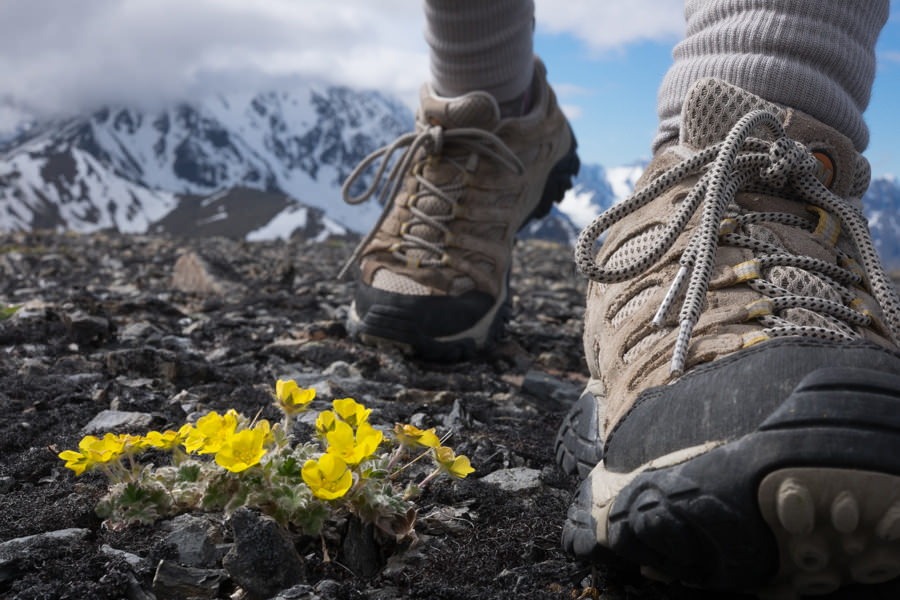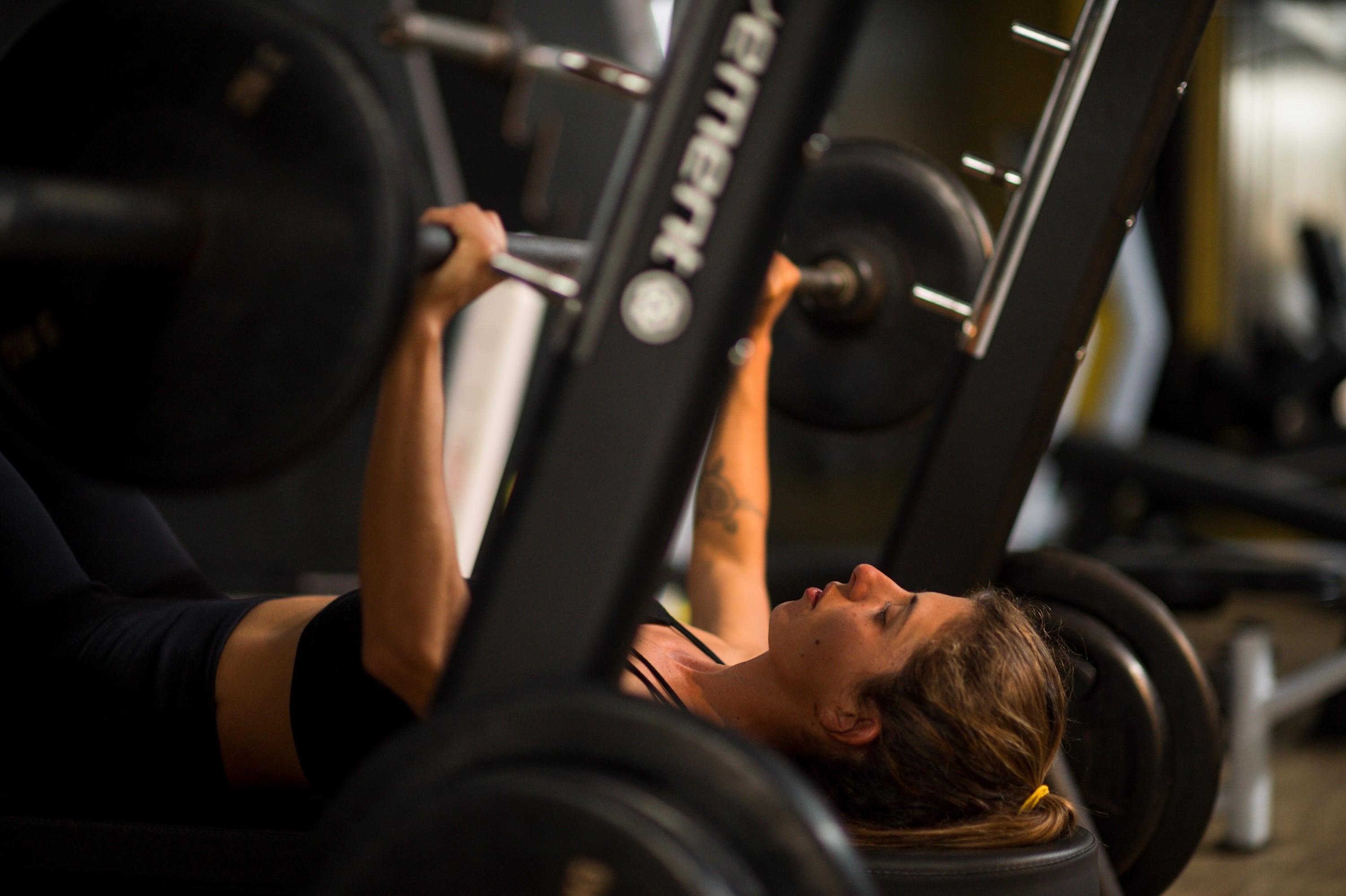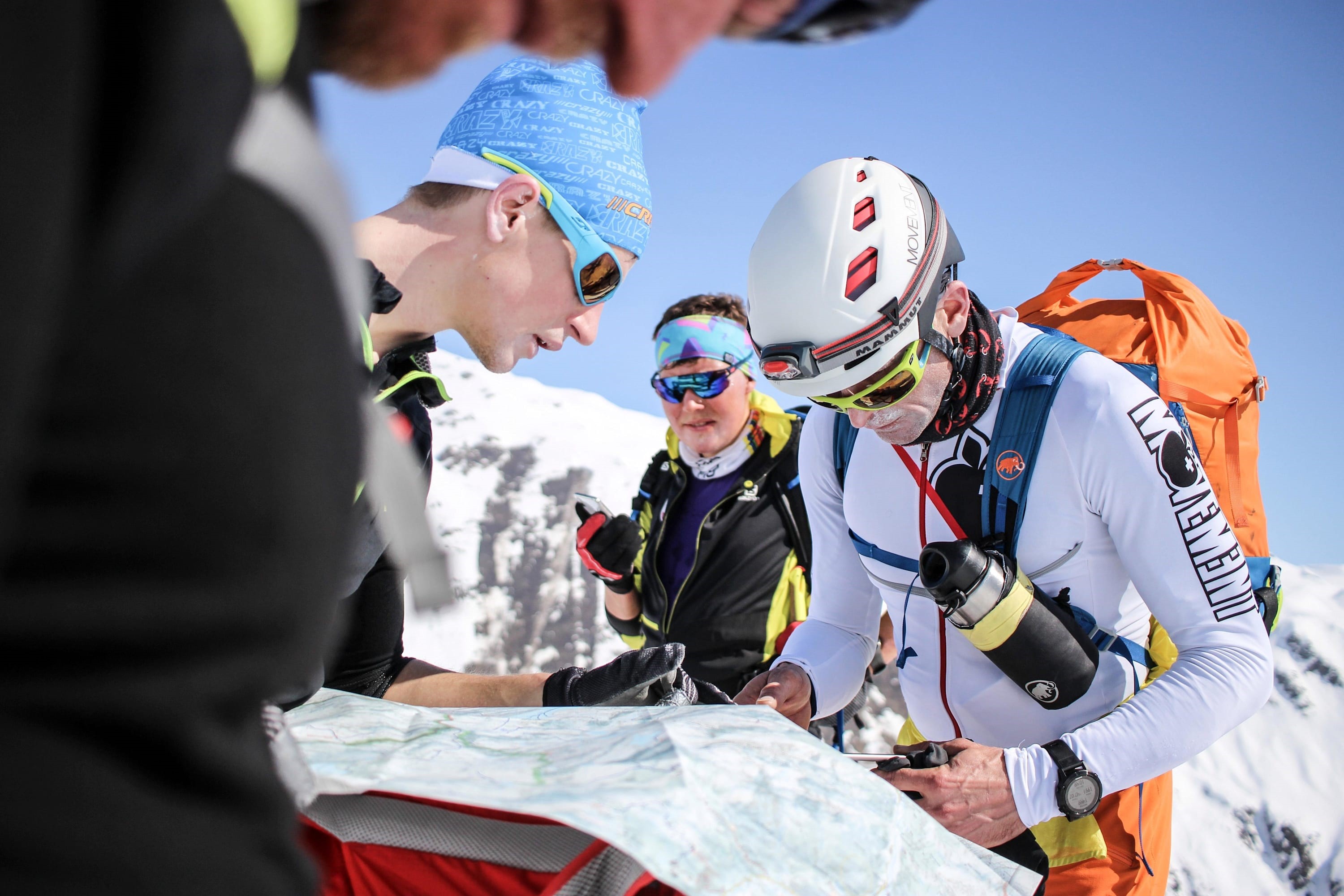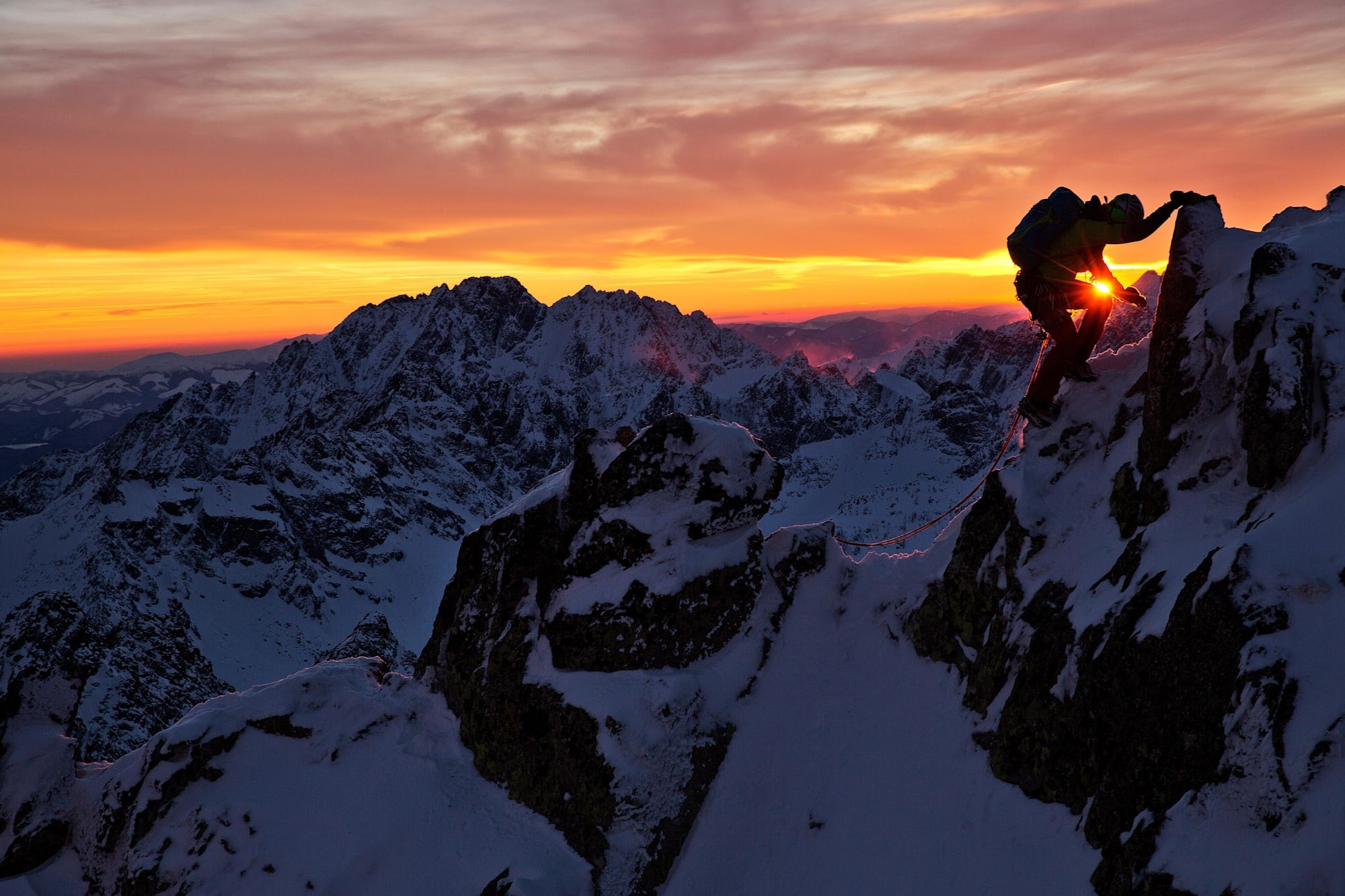Preparation before your journey
Before every trip, not just climbing, you must prepare all the information as well as the necessary applications. With climbing experience compiled from many sources, before climbing you need to prepare
1.1. Determine the right climbing time
Before participating in climbing, you need to determine the appropriate climbing time. The weather changes very erratically, sometimes it's sunny, it's rainy, it's stormy, so before you organize a climb, you need to determine the right time for each area. Choose the right time for everyone to organize ice climbing.

Choose the right time to climb the mountain
Along with the time factor, the climbing location also needs to be arranged. Research the terrain in advance to prepare a suitable travel time, arrive at the tourist destination at the scheduled time. At the same time, knowing the terrain where you participate in climbing helps improve safety during the journey.
1.3. Note about the weather
Sometimes there are also unusual changes, check the weather forecast before climbing. In addition, if you want to go into bad weather, you should consider all factors as well as your own climbing experience.
1.4. Practice before the trip
Climbing experience is accumulated as you participate in many expeditions. However, before each trip that you need to do is exercise yourself. Exercise to improve fitness, help your body not be exhausted when the first high intensity operation. In addition, you should increase your resistance by adding vitamin-rich foods such as lemon juice, fresh fruit, etc.

Improve fitness before the trip
Safe and effective climbing experience requires preparing the necessary equipment. Things to bring when climbing include:
2.1. Water and food
Climbing is a physical activity, sweating a lot, so the body needs to be hydrated regularly. When climbing is tired, do not drink continuously or large water because it will make the body uncomfortable. You should drink water drop by drop and from the beak down. In order not to make the journey, you can hang the water bottle before you go and drink. In addition to drinking water, maintaining physical fitness is also very important. Instead of oven baked goods, which takes time, you can eat high-quality foods such as chocolate, snicker cake or dry food, which is both quick and easy to carry.

Prepare enough food and drinking water when climbing
The climbing experience for beginners is to choose light clothes, with good elasticity, sweat absorption and quick perspiration. In addition, clothes with sunscreen and deodorant features should also be prioritized to wear when climbing.
Backpacks, water bags, towels, gloves, umbrellas are certain accessories that must be prepared for a comfortable trip.

Climbing clothes should be light and neat
Some other must-have apps for mountain climbing are:
3. Climbing notes for beginners
3.1. Short roads suitable for ability
When you first start climbing, you should not choose a long journey because your physical strength will certainly not be enough. Not only that, if you do not have experience in climbing, you should not participate in a long journey because you will not be able to ensure that the entire trip is smooth and safe. Therefore, beginners should choose for themselves a short climbing journey to get acquainted first.

Choosing a short route when climbing for the first time
Choose shoes specifically for climbing activities. You can base on the terrain and your own needs to choose a suitable shoe for you. For socks, you should choose a higher collar than the shoe collar, especially in forests with difficult terrain.

Shoes and socks suitable for climbing activities
Besides the preparation, learning how to use survival items is also one of the climbing experiences. Mastering the use of survival items helps you improve your safety.
3.4. Allocate energy for the whole journey
Improve your body's stamina by working out before every ride. At the same time, evenly distribute energy for the whole journey so that you don't lose your breath when you are only halfway there.

Distributing fitness evenly throughout the journey
Luggage to the top of your first mountain
Are
you very Reaching a mountain summit is a mind-blowing experience, but what does it
take to make
it to the top? Mountaineering covers everything from extreme backpacking on long but
non-technical trails through
summit scrambling and ridge walking to hard-nut multi-pitch climbing up impossibly
icy rock faces.
Trips can last multiple months or be as short as a day, but whatever your distance
you
need decent physical fitness, some technical know-how and, perhaps most importantly,
the right mentality for the
challenge. If you’ve got that, then read these tips and go get started.
1. Build up the basics

First off, get fit. Include walking and stair climbing in your daily routine, add regular running and cycling to build base fitness and do weights to strengthen the upper body. Also, go to a climbing gym to get a grasp of the basics, like being able to use a harness, belaying and tying into a rope.

There's no getting away from winter conditions
Then put on a heavy rucksack and go up a hill. Do multi-day backpacking trips, practise scrambling and build confidence on large crags and ridges, both alone and roped with a partner. Finally, get comfortable doing all that in winter conditions – because mountaineering can be very cold.
2. Pick your target
Target the terrain and the exact difficulty of the climb you want
Consider what terrain you want to take on – technical routes, granite faces, glaciated mountains, ice or mixed climbing or just walk-ups. Then plan long-term goals as well as setting out your starting plans.
Climbs are graded by height – in 1,000m brackets from 4Kers to 8Kers – and a class system based on steepness and exposure, with 1 flat and risk-free, 2 and 3 increasing in gradient and obstacles, 4 involving all-fours scrambling and 5 being highly technical with rock-climbing skills. Alpine grades are similar, from F (Facile) through PD, AD, D, TD to ED (Extrêmement Difficile).
Also, don’t be over ambitious. It’s better to feel good about your achievements than be disappointed you’re not hitting your targets.
3. Take a course
 A guide can teach you best practice and impart crucial mountain knowledge
A guide can teach you best practice and impart crucial mountain knowledge
The ‘mountain bible’ Freedom of the Hills is a good place to start and if you have mountaineering friends they can teach you the basics, but nothing beats taking a course. Going out with a guide puts you in the mountains and gives you on-the-spot feedback and that crucial personal experience.
Courses are usually six days on class 2-3 routes and cover route planning, navigation, safe travel, rock climbing and logistics like weather analysis and mountain rescue. Some also cover snow and ice, including techniques for self-arrest and glacier hiking. Having all these in your locker helps you become more independent in your decisions on the mountain.
4. Become master of the maps

Knowing how to read a map is crucial to high mountain survival
The more navigation experience you have the better. Practise at home by plotting a course between two points on any map. Plan real routes you can go out and do and find POIs you can navigate to. Use all the tools – GPS, compass, altimeter, map contours, triangulation, bearings and sightings. And once you’re confident, get lost and try to navigate back.
Predicting your pace is crucial for planning as it helps avoid overdoing days and exhausting yourself. Make sure you estimate well. Measure a distance on a path near your house and pace it out – but pace hill walks too so you know how it changes when it gets steeper, higher and you get more tired.
5.Prepare for altitude

Prepare your lungs for being at altitude
Any 3Ker or above and you’re likely to be affected by altitude. Don’t take it lightly. At its mildest, it can cause insomnia, lost appetite and nausea, all of which destroys your motivation and fitness. At its worst, it can lead to pulmonary edema, which floods your lungs and can be fatal.
Acclimatisation is vital. Go up slowly, climb high and camp low and the body can often work things out. Rehydrate and eat, even if you don’t feel like it. And out on the trail, use pressure breathing to regulate oxygen in the blood, slow your pace and take measured rhythmic steps. If you get disoriented or develop a cough, descend as quickly as possible.
6. Plan, plan, plan

Leaving nothing to chance, be prepared for all eventualities
Start local or in a well-travelled region with easy access to information and well-defined routes. Plan days with pace in mind and don’t be too ambitious – a pitch or steep climb that looks easy on paper is tougher at the end of a tiring day with a big pack, especially at altitude. Allow weather contingency and always have Plan B in your pocket – quite literally.
Permits and logistics (and visas if going abroad) all need precision planning and language barriers can make things a lot harder.

Michal Sabovčík climbing at sunrise
7. Build your skill set slowly

It's hard work, but you'll enjoy the ride when you complete a major ascent
Build up gradually and learn as you go. Never try something out for the first time on a big trip. Practise skills in a safe environment and be confident in them before you need them. You don’t need to be in the mountains – you can set up a crevasse rescue at home or an ice-axe arrest on a muddy bank.
It takes many trips to get a sense of reading conditions and it also takes time to learn to work with your partner and move together smoothly and efficiently but safely, knowing when to switch between pitched climbing and short-roped hiking.
Finally, if you feel yourself hitting a buffer, don’t be too proud to hire a guide to help take you to the next level. It’s safer to expand your skill set with an expert than to gamble on your own.